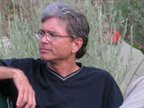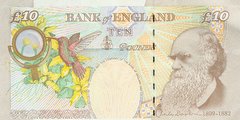Some folks like e-books. Others like iBooks. But I'm a Z-books man. As in
Ziesing Books. Mark and Cindy Ziesing have been peddling books for a long time out of their home in Shingletown, California. That's State of Jefferson country in case you don't know. Shingletown is an unincorporated little burg in Shasta County just east of Redding on State Route 44 on the way to Lassen Park.
The Ziesings have a print catalog and a
website jam-packed with lots and lots of weird and wonderful stuff. They used to publish books as well, and I have maybe a half-dozen lovely hardcovers with the Ziesing imprint--John Shirley, Tim Powers, Iain Banks, Lucius Shepard and the like. I've been shopping at Ziesing for about twenty years and in all that time have never talked to an employee, salesman, or customer-service rep. When you call on the phone either Cindy or Mark will answer. Same when you email. You get hand-written notes from them in your packages. This is a real, live, mom-and-pop operation. I once had a shipment of Z-books stolen from my post office box. When I called Ziesing, Mark sent me replacements without hesitation and charged me only the shipping! (There were, if I remember, a few one-of-kind items that I'd ordered that were lost forever, but the bulk of it was indeed replaceable.) He certainly did not have to do that, and I certainly did not ask him to, but he made me a customer for life nonetheless. Those low-lifes who stole from me (and them, by extension) would obviously never appreciate the literary bonanza they stumbled upon or the grace and class of the Ziesing operation.
I just received my latest order. It was preceded, of course, by an email from Cindy letting me know it was in the mail. All four books were individually paper-wrapped before boxing--you think Amazon does that? I got two hardcovers,
The Right Madness by the late
James Crumley and
Leather Maiden by
Joe R. Lansdale. Mr. Crumley is considered by many as a modern
noir master and this is my first foray into his
oeuvre. The book was listed as "Fine in Fine dust jacket." That means it is a new book that has sat on a shelf for a while (it's from 2005). That one set me back five bucks. Mr. Lansdale is a well-known and accomplished horror and crime fiction writer, and I've read several of his excellent short stories. This is my first Lansdale novel. The book is new, a 2nd printing from 2008, and it cost four bucks. I'm cheap--I scour the "sale" section. I challenge anyone in bookstore meccas like Berkeley or Portland to find better deals with less hassle than that. I also picked up a vintage paperback from Ballantine (it looks like a 70s edition) of
Theodore Sturgeon short stories (
E Pluribus Unicorn) for two bucks, and a new mass-market paperback from
Joe McKinney called
Flesh Eaters. The new book was $6.99, the most expensive item on the list!
I interviewed Mr. McKinney a few months ago for the
Gutter Books website--another small, local, independent venture.
Flesh Eaters is one of his apocalyptic zombie books. The Sturgeon was a real find as he is one of the all-time SF greats.
When you are weary of shopping at soul-less box stores and giving your Visa number to mega-corps, check out
Ziesing Books. In fact, don't wait until you are weary. Shop there now. Besides, they are also
Giants fans.






